
Darwin is named after Charles Darwin, who stopped here in the 1840s aboard the ship, Beagle, that also took him to the Galapagos. The name was changed to Darwin in 1911, prior to that the town was called Palmerston. Palmerston is still the name of a suburb of Darwin.
Like Broome, Darwin is built on a complicated peninsula with lots of little capes and beaches between them. Unlike Broome, the cape is within a large complicated gulf, almost fractal in appearance, and from downtown Darwin it is hard to see the open ocean.




Long before Charles Darwin, the area was home to the Larrakia people, many of whom still live in Darwin and the surrounding the area.
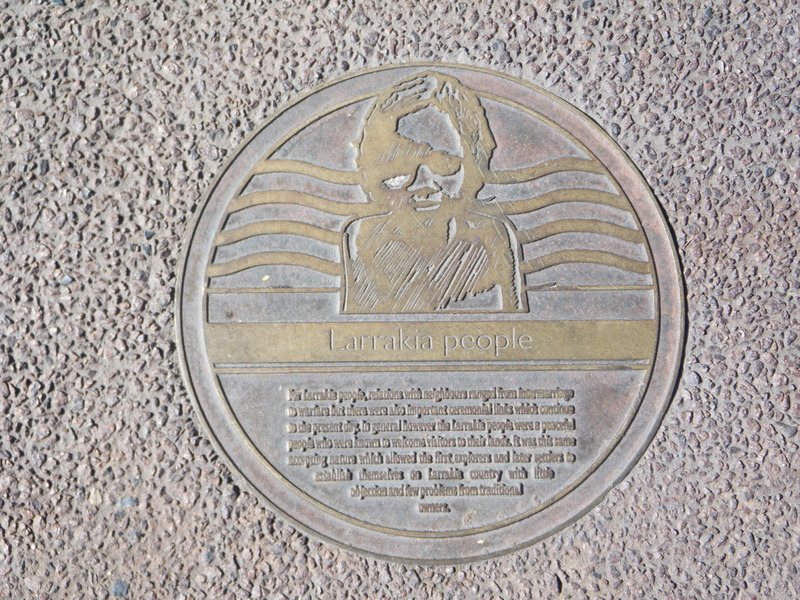
Darwin is much closer to Indonesia than to Sydney. As a result of being close to Indonesia, Darwin was bombed many times in World War II. After the first bombings, most of the civilian population was evacuated to the South of Australia, and military forces came to take their place. The bombings caused considerable damage, but there was never an invasion. Paved roads from Darwin to the rest of Australia were built for the first time as part of the military buildup,
Eventually, the war ended and the civilians returned to a much changed city.
In 1974, in the night between Christmas eve and Christmas day, a cyclone named Tracy hit Darwin. The cyclone, especially the winds, did a lot of damage and flattened most of the houses in Darwin. The instrument for measuring wind at Darwin airport was damaged by the wind, so exact wind speeds are not known, but peak wind speeds were estimated at 200kph.
After the cyclone, again, many of the residents of Darwin were evacuated to the South. Many of them returned after a few months.
Because of Tracy, many of the buildings even in downtown Darwin are relatively recent.


The second picture above shows one of the malls on Smith Street, in downtown Darwin. In Australia, the word "mall" refers to a street reserved for pedestrians, or at least, I've seen it used that way both in Perth and in Darwin.

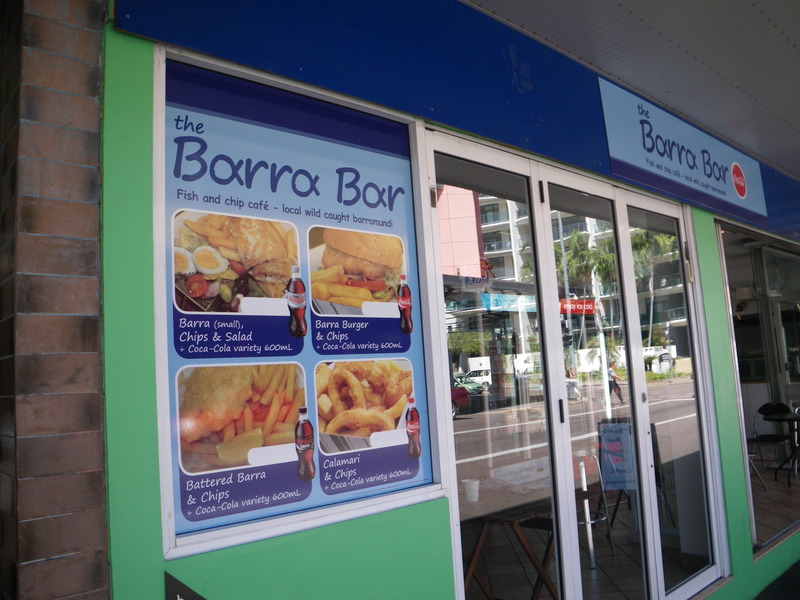
The second picture above shows a restaurant that specializes in Barramundi, which is a fish that is very popular everywhere I've been since the Kimberleys. Barramundi is a freshwater fish that can get to be about a meter long, and every time I've eaten it, it has been very tasty. Apparently, fishermen really like to catch Barramundi.
The beaches that I saw in Darwin are quite nice, though because the tide was low, I had to walk a long way to reach the water here on Mindil beach.
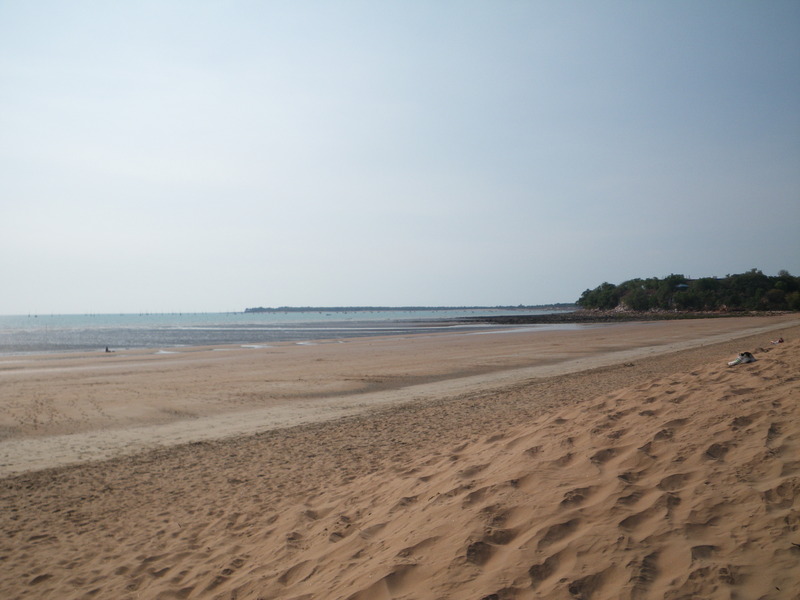


In the intertidal zone, the sand had some nice patterns, and there were some interesting crabs with a nearly spherical body. As in the rest of Australia that I have visited, there were plenty of birds.




The bird in the last picture above is an ibis, I think.
And this is another beach.

In 1978, the Northern Territory became a state, and Darwin became the capital. The parliament building was designed to be cyclone-proof.

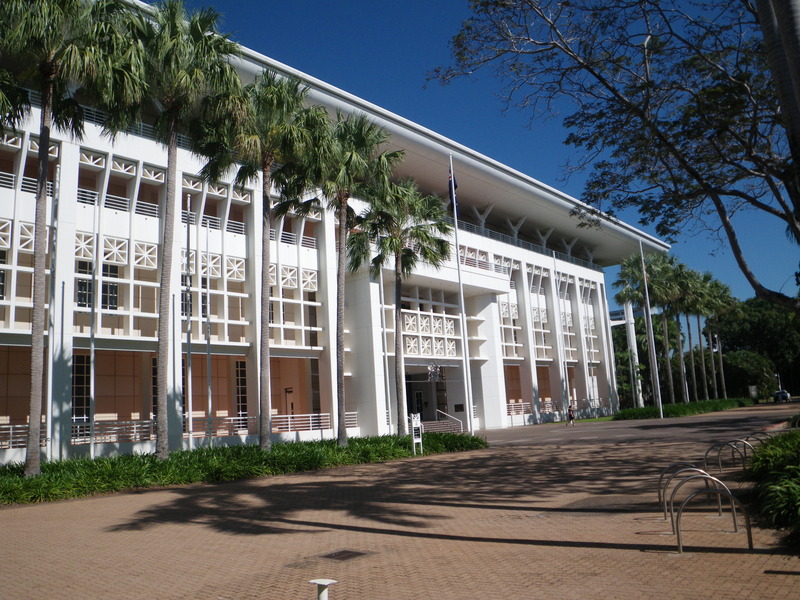

The downtown area of Darwin is high above the water.



Some of the plants here are familiar. The plant that in this picture is growing horizontally in Hawaii is called Hau (Hibiscus tiliaceus).
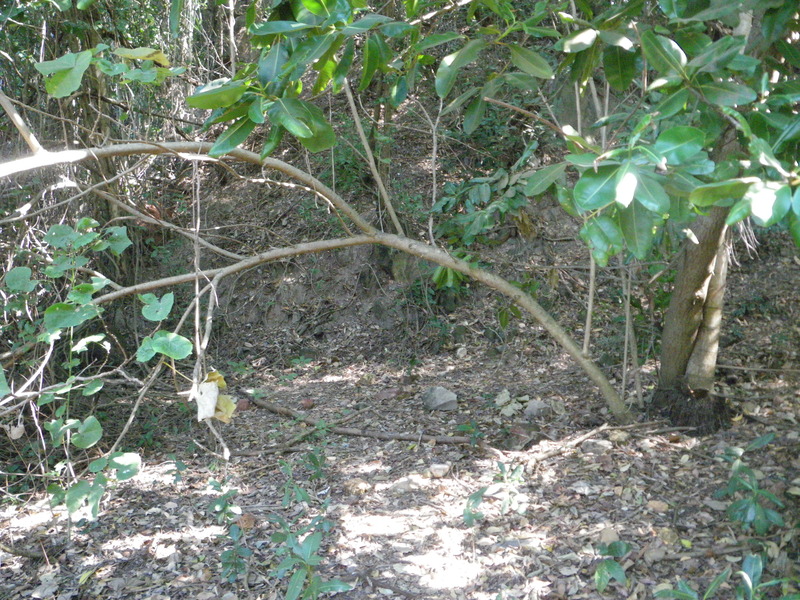
Although I was in Darwin for 3 days, I didn't visit as much as I thought I would, and for two reasons. Having returned the car, I had to find my way to interesting places on foot, and that takes longer. Also, Darwin has better Internet facilities than any place I've visited between Perth and here, and so I spent some time catching up on things I had neglected while driving around.
When I described my arrival in Perth, I mentioned a few differences I noticed coming to Australia from Thailand. There is one difference that I have been really noticing lately, and that is, how hard it is to get Internet in hotels in the outback of Australia. My experience in Eastern and South-East Asia is the opposite, that Internet is widely available and usually fast, and often free, for example in airports. I tried to use the Internet at Perth airport, and while they had some free terminals, they did not have any way to connect my own laptop.
Perhaps in the Australian outback my lack of Internet access is due to to my choice of relatively inexpensive motels, but perhaps not -- in Darwin, the places with Internet are the cheap backpacker hostels, not the more expensive motels. And even the backpacker hostels are hit-or-miss. I asked one employee of a hostel whether all of their rooms have WiFi, and I was told that some do, but in some rooms, the WiFi would not reach. I got into a bit of a technical discussion. In the U.S. and many other countries, I can buy a wireless access point for under $100, string a cable to my existing Internet connection, and put wireless Internet access wherever it is needed. A few minutes of configuration if desired (most of these units are plug-and-play, so configuration is optional) and Internet is available. I mentioned this to the employee, and she told me they hire a company to manage their Internet, and that it costs much, much more than $100 to add a new access point.
I was surprised. Either something is really strange in Australia, or somebody is making a lot of money by making something very simple seem very complicated. Or maybe I just know so much, that it seems simple to me, but hard to others.
Whatever the explanation, the general shortage of Internet during my trip so far has been in sharp contrast to my recent experience in Korea, Thailand, and Laos, and my previous experiences in Taiwan.
And as you might guess, I am in favor of at least some form of Internet access for everyone as long as it is technically possible. I feel phone companies who charge a lot for SMS (texting) are silly as well as unnecessarily keeping people from communicating. After all, an SMS (text message) is at most 140 bytes or 1120 bits. A normal phone conversation uses 8,000 bits/second uncompressed, and still several thousand bits/second after compression. So if a phone company charges me the same for SMS as for 1 minute of conversation, they are charging me 100 times more per bit for the SMS. Which seems excessive and unreasonable.
I feel so strongly about this that I have started a project to help people communicate directly when their mobile devices are within range of each other, kind of like a walkie-talkie. After all, our phones have radio receivers and transmitters, so they should be able to do that. The project also takes advantage of anyone who might be willing to donate a small percentage of their Internet connectivity to others, to help people communicate send text messages even when they are not directly in range of each other.
The project, AllNet, is at a preliminary stage, but if you want to learn more, you may look here.
Darwin has a very nice museum. Unusually for most museums, it combines art, Natural History, and Maritime exhibits. I could not take pictures inside the museum, but here you can see one of the boats belonging to the museum.

In the museum, I found the artwork interesting, as well as the skeletons of fossil Australian megafauna are interesting, as are the exhibits related to cyclone Tracy. The location, by the shoreline, is also very nice.
Finally, I have a confession to make. I have seen freshwater crocodiles ("freshies"), back on the Fitzroy river in the Kimberley region. I have been wanting to see their larger relatives, saltwater crocodiles ("salties"), and although supposedly they are easy to see in Kakadu national park, I must not have gone to the right sponts, because I did not see any. Since I am leaving the part of the world where saltwater crocodiles live, I decided to go see them in a small zoo that is in downtown Darwin, Crocosaurus Cove.
While I recognize that some species these days can only survive in zoos, I normally don't like zoos, because I don't like to see animals confined to what I always feel is too small a space. Nonetheless, this was the way I was going to see saltwater crocodiles, so I went.
Saltwater crocodiles are impressive and to me, somewhat scary. They are huge, up to 5-6m long and weighing hundreds of kilograms. Salties normally eat land animals, and in the Darwin region, there is at least one saltwater crocodile fatality every year. They are social and fairly smart, and sometimes very aggressive. They can live to 70 or 80 years old, or perhaps more.


Crocosaurus Cove dramatically calls the plastic box that the people are in the "cage of death". If you look carefully at the second picture, you will see a large crocodile behind the cage of death.
Each of the crocodiles here has a name and a history. Even the crocodile that was featured in the movie "Crocodile Dundee" is here. There is also an opportunity to hang some food about a meter above the water, and watch small crocodiles, about a meter or two long, jump for it. My observation was that exactly one crocodile would jump for any one piece of food -- there was never any obvious tussle. This suggests to me that the crocodiles have ways of communicating among each other who is going to eat the food, and that confirms for me that they are fairly smart. One of the signs compared their intelligence to that of a dog.
Another benefit of visiting Crocosaurus cove is I got to see the endangered Fitzroy river sawfish. It is a large fish, looking a bit like a cross between a shark and a swordfish, but more closely related to a ray. The saw is long and flexible. I was there during a feeding, and I could see how the sawfish moves the saw left and right to try to stun the small fish and guide them to the bottom (in this case, towards the glass of the acquarium) and then towards its mouth. In this case the fish were already dead, but the sawfish's behavior would probably have been the same for live fish.